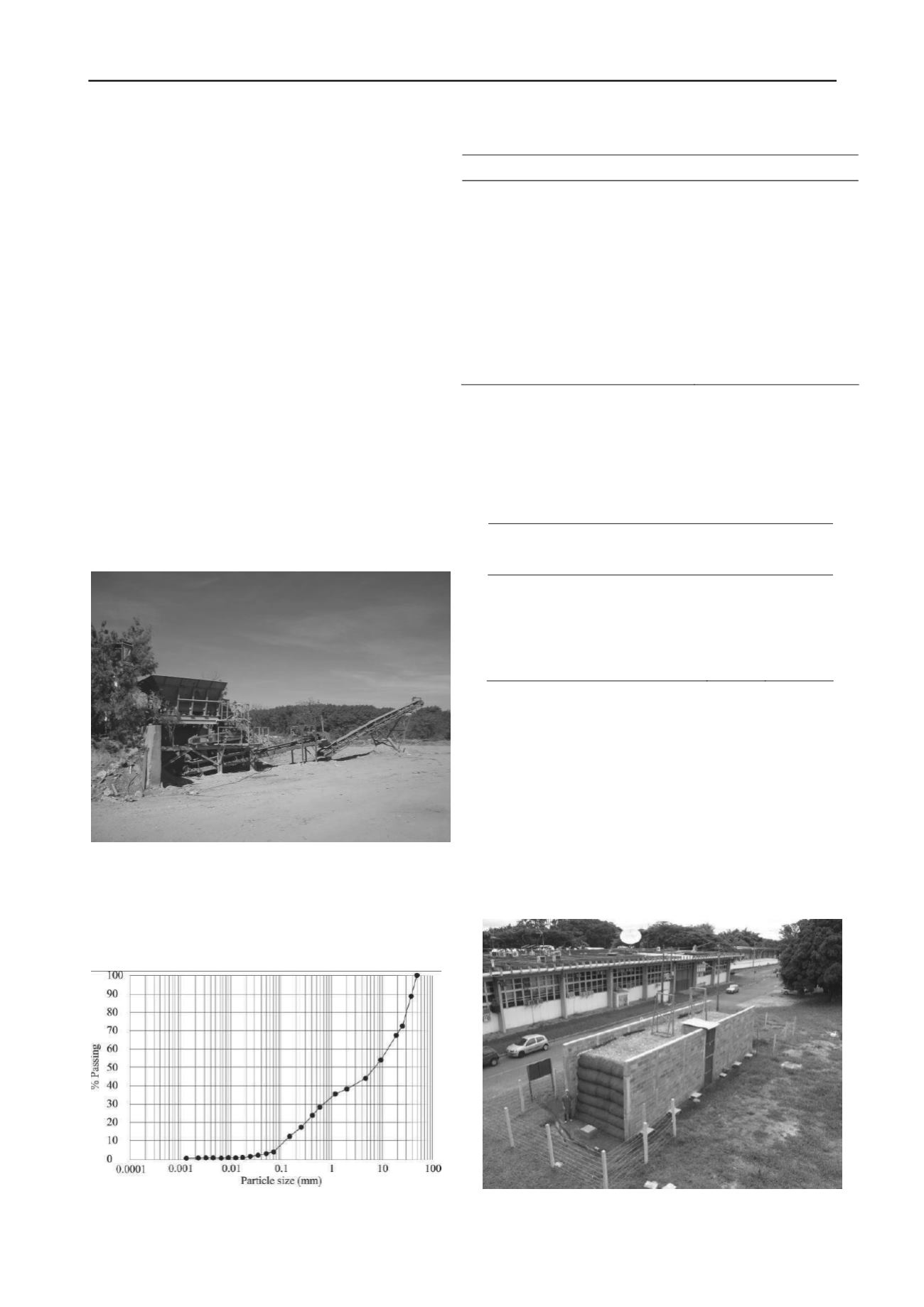
3252
Proceedings of the 18
th
International Conference on Soil Mechanics and Geotechnical Engineering, Paris 2013
The RCDW material revealed a low coefficient of variation
with respect to geotechnical properties and low alkalinity
applicable to be used with geogrid products. The mechanical
properties were excellent for the proposed application. The
results of pullout tests with RCDW showed that the recycled
material yielded a better performance when compared with the
standard sand.
Based on the facts listed above and results observed by
Santos (2007) as well as on interesting perspective for the use of
this waste in geotechnical structures, a research programme
aimed at investigating the performance of reinforced soil
structures using RCDW as backfill material started in 2009 at
the University of Brasilia, Brazil.
2 EXPERIMENTAL REINFORCED RCDW WALLS.
2.1
Recylced Construction and Demolition Waste (RCDW)
The recycled construction and demolition waste (RCDW) used
as backfill material consisted of the product of the crushing
process of construction and demolition waste (CDW), which is
composed mainly of mixed materials including soil, bricks, and
small particles of concrete. The RCDW was sampled at the
CDW Re-cycling Plant of Brasília-DF, located at Jockey Club
Landfill (Figure 2). Usually, this material is used by the local
government as cover for unpaved roads.
Figure 1. CDW Recycling Plant of Brasília-DF.
A large-scale equipment was used for the determination of
the RCDW shear strength parameters. Because of the presence
of coarse grained particles (Figure 2), the dimensions of the
shear box used were 800x800x450mm. Table 1 presents the
main geotechnical parameters of the RCDW tested.
Figure 2. RCDW grain size distribution (Santos et al. 2010).
Table 1. Geotechnical properties of RCDW.
Parameter
Value
Specific gravity (g/cm
3
)
2.74
Liquid limit (%)
35
Plastic limit (%)
28
Maximum dry unit weight (kN/m
3
)
16.9
Optimum water content (%)
18
Friction angle (°)
38
Cohesion (kN/m
2
)
14
2.2
Geosynthetics
The geosynthetics used as reinforcement for the walls in this
investigation consisted of a polyester geogrid and a
polypropelene nonwoven geotextile. Table 2 summarizes the
main properties of the reinforcement.
Table 2. Geosynthetics properties.
Data/Value
Parameter
Geogrid Geotextile
Polymer
PET
PP
Longitudinal tensile strength (kN/m)
20
19
Transverse tensile strength (kN/m)
9
21
Maximum tensile strain (%)
12
70
2.3
UnB Retaining Wall Test Facility
Experimental walls were constructed in the UnB Retaining
Walls Test Facility located outdoor at the Foundation, Field
Test and Geosynthetics Experimental Field area. The test
facility was designed to allow two walls to be constructed up to
3.6 m high by 3.7m wide and extending up to 7.2m from the
front edge of the facilityedge. The facility can contain up to 214
m3 of backfill material for the construction of two walls
simultaneously. Figure 3 shows an overview of the test facility.
Figure 3. UnB Retaining Wall Test Facility (Santos et al. 2010).


